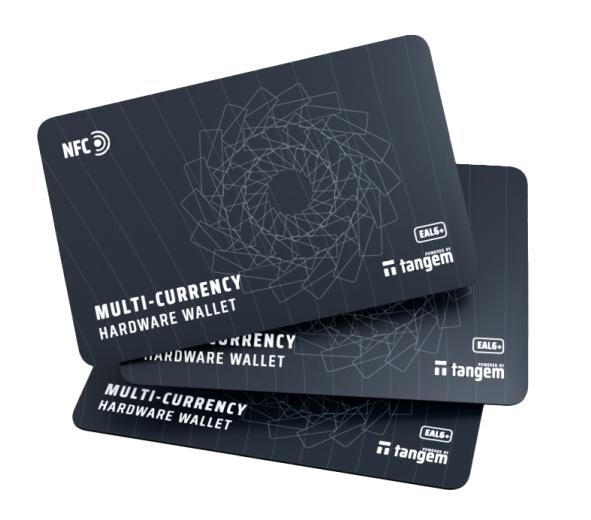You ever get that uneasy feeling about where your crypto really lives? Yeah, me too. I remember the first time I lost a private key—yeah, total nightmare. It’s wild how something intangible, like a string of characters, can cause so much stress. Honestly, my gut always tells me hardware wallets are safer, but carrying around bulky devices isn’t exactly convenient. Here’s the thing. What if your crypto wallet looked and felt like a regular credit card? That got me curious.
So, I started digging into smart card wallets. Initially, I thought they might be just another gimmick trying to ride the crypto hype train. But then I stumbled on this device called tangem. Seriously? A hardware wallet embedded into a contactless smart card? That blew me away. It’s like having a vault in your wallet without the bulk.
Smart card wallets blend blockchain security with everyday usability. They use NFC (Near Field Communication), so you just tap your card against your phone or reader to sign transactions. No cables, no plugging in. Wow! That simplicity is a game changer, especially for folks like me who hate fumbling with wires and complicated setups. But wait—there’s more to it than convenience.
What bugs me is that conventional hardware wallets, while secure, still demand a level of tech-savvy that intimidates many users. Plus, losing or damaging them is a huge risk. Smart cards, on the other hand, are rugged, pocket-friendly, and look just like your regular bank card. You can stash it anywhere without drawing attention. That’s some real-world thinking right there.
Okay, so what’s really happening under the hood? Well, these cards don’t store your private keys online or on a cloud. Nope. The keys are locked inside the chip, never leaving it, which means they’re immune to remote hacks. You perform cryptographic operations right on the card. This hardware-based isolation is crucial because, without it, your keys are vulnerable to malware or phishing attacks.

Contactless Payments and Blockchain Security: A Natural Fit?
Contactless payments have become second nature in the US—tap your card, and boom, done. So applying that to crypto wallets feels intuitive. But I was skeptical at first. How secure can NFC be? Couldn’t someone just skim my card or intercept the signal? I did some research, and here’s what stood out: the communication between your phone and the card is encrypted and requires physical proximity. It’s not Bluetooth or Wi-Fi, which are more prone to remote exploits.
Also, the card demands user authentication for each transaction—usually via your phone app—before signing anything. That means even if someone got hold of your card, they couldn’t just drain your funds without your approval. Hmm… that gave me some peace of mind, though I’m still cautious about always keeping my card safe.
On one hand, NFC smart card wallets like tangem offer a frictionless experience that could mainstream crypto use. Though actually, the tech isn’t perfect yet. Some wallets have limitations around multi-currency support or advanced DeFi interactions. But honestly, for everyday users primarily holding Bitcoin or Ethereum, it’s a solid step up.
Here’s a little anecdote: I lent my tangem card to a friend who’s crypto-curious but totally non-technical. He was able to send a small amount of crypto by just tapping the card and confirming via his phone app—no passwords, no seed phrases. That was an “aha!” moment. It made me realize that smart card wallets could lower the barrier to entry for millions.
Still, I won’t pretend this solves every problem. Smart cards can be lost or stolen, just like any physical object. And while they offer strong security against remote hacks, physical security remains a concern. Maybe integrating biometric verification would help, but that’s probably in the pipeline for future versions.
Why Tangem Stands Out in the Crowd
Okay, so tangem isn’t just any smart card wallet. What sets it apart is the blend of solid cryptography with practical design. The card is tamper-evident—if someone tries to open it, it’s instantly obvious. Plus, it supports multiple blockchains, which is a huge plus for anyone juggling different assets.
Here’s what bugs me about some other solutions: they either feel too futuristic or too clunky. Tangem nails that sweet spot. It fits in your wallet alongside your driver’s license or debit card, and it works with a simple tap. No fancy gadgets, no complicated setup. That’s rare in crypto gear.
Interestingly, the company behind it also focuses on regulatory compliance, which might sound boring, but it’s actually crucial for crypto adoption in the US. They’re making sure their product aligns with legal frameworks without compromising user privacy. That balance is tough, but they seem to be handling it well.
On the other hand, I did notice that the tangem card isn’t cheap. For casual users, the upfront cost might be a barrier. But honestly, when you weigh that against the peace of mind from secure, contactless crypto management, it feels worth it. I’m biased, but I see this as a solid investment in your digital financial future.
Oh, and by the way, if you’re wondering about backup options, tangem provides a way to securely duplicate your wallet across multiple cards. That’s a neat feature, reducing the risk of total loss. Though, it does raise questions about how to store those backup cards safely. It’s a trade-off, like most things.
Wrapping My Head Around the Future of Crypto Wallets
Initially, I thought smart card wallets might just be a niche gadget for crypto enthusiasts. But now, I’m convinced they could be mainstream game changers. The US market, with its love for convenience and contactless payments, seems ripe for this tech. Still, adoption depends on education and trust. People gotta feel safe carrying their crypto the same way they carry cash or credit cards.
That leads me to wonder about the role of banks and payment networks here. Will they embrace smart card crypto wallets or see them as competition? The landscape is shifting fast, and honestly, it’s hard to say. But I’m excited to watch how innovations like tangem push boundaries.
Something felt off about the notion that crypto has to be complicated and inaccessible. This smart card approach flips that script. It’s secure, simple, and fits into everyday life. Yeah, there are still bumps on the road, but I’m optimistic. And honestly, if you’re looking for an innovative way to hold your crypto safely without the hassle, this might be your ticket.
Anyway, that’s my two cents. I’m not 100% sure this is the final form of crypto wallets, but it’s a damn interesting direction. Maybe next time we chat, I’ll have more stories from the frontlines of this smart card revolution…
